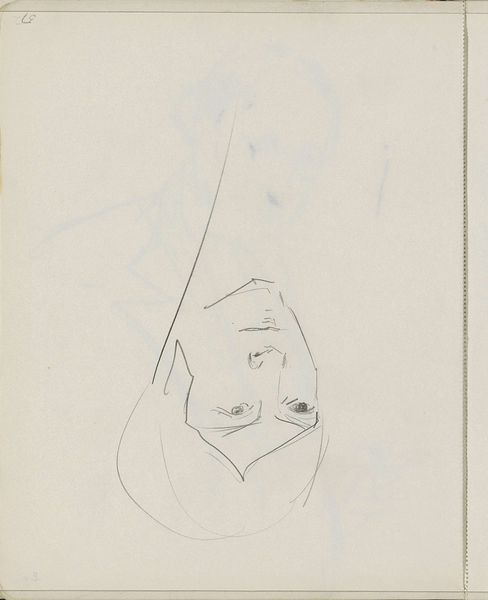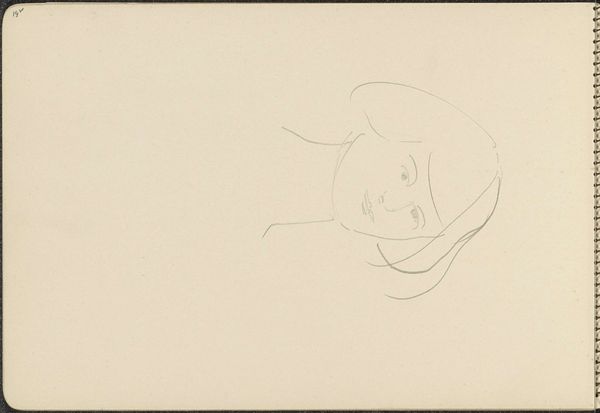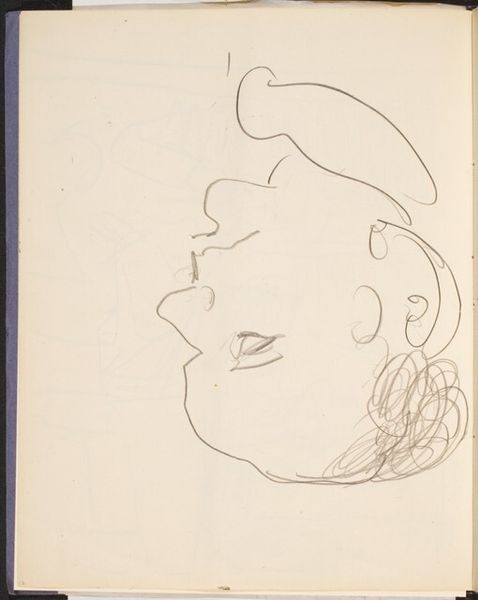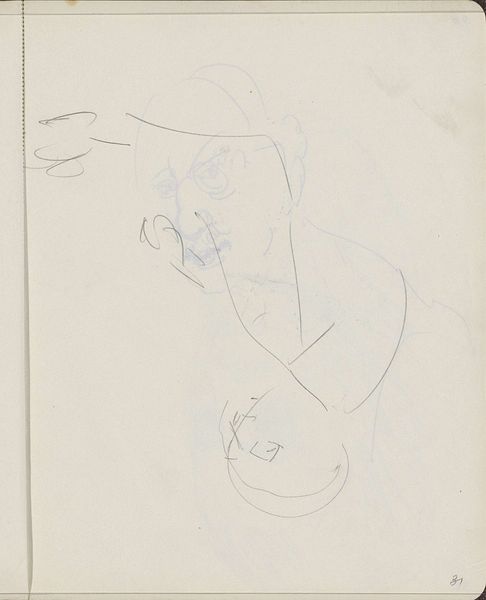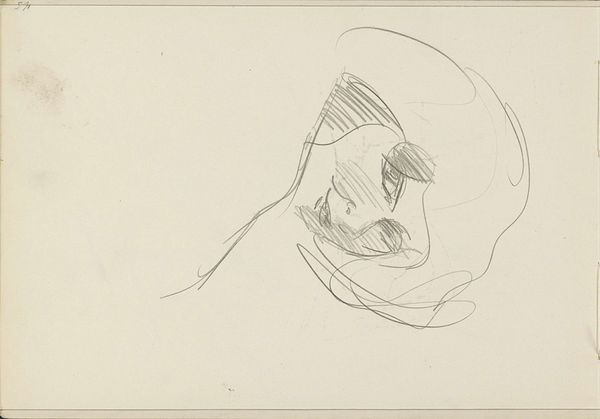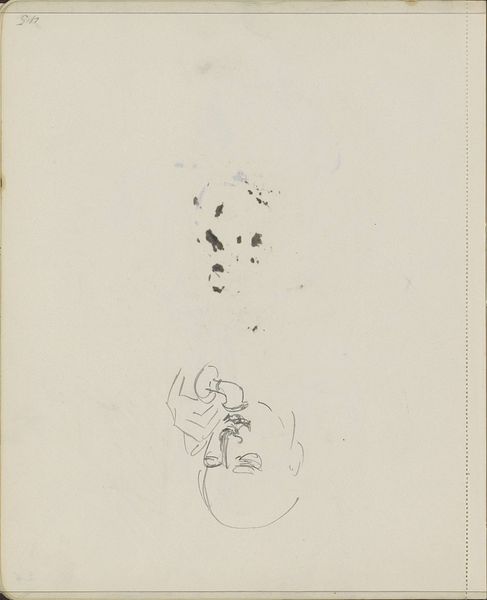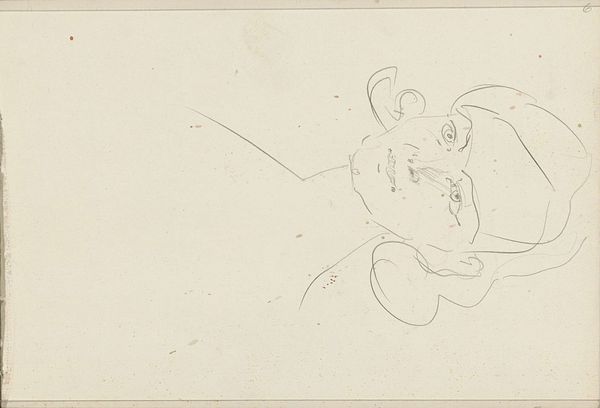
Copyright: Rijks Museum: Open Domain
Editor: This is Isaac Israels's "Vrouwenhoofd met hoed," or "Head of a Woman with a Hat," from around the 1920s. It's a pencil drawing, and the lines are so delicate. It almost feels like a fleeting impression. What do you see in this piece from a formalist perspective? Curator: Immediately, the work displays a compelling study in line. Observe how Israels uses varied line weights to suggest form and shadow, primarily focusing on contours rather than elaborate internal modeling. Notice how the structural elements are all suggested rather than literally drawn, the tension comes from how the light reflects through what IS drawn. Editor: It’s interesting how the lines that form the hat are so much more free-flowing and abstract compared to the woman’s facial features. Is that a deliberate choice? Curator: Indeed. Consider the interplay between the implied geometric structure of the hat and the more defined features of the face. One could interpret it as Israels contrasting fleeting fashion with the permanence of human features. Semiotically, how do these divergent forms impact our interpretation? Editor: I guess the contrast makes the woman's face the focal point. The hat becomes almost an afterthought, even though it occupies a significant part of the drawing. I never really considered the semiotics of this drawing. Curator: Precisely! It showcases how formal elements guide visual interpretation. We also could ask, do you believe the use of line directs or perhaps deflects meaning here? Editor: It directs, because the minimalism draws me closer, making me really look, but because its so minimally drawn, you could interpret it in many ways... which makes the overall effect even stronger and more thoughtful. I hadn't considered art looking so purely at its form.
Comments
No comments
Be the first to comment and join the conversation on the ultimate creative platform.
